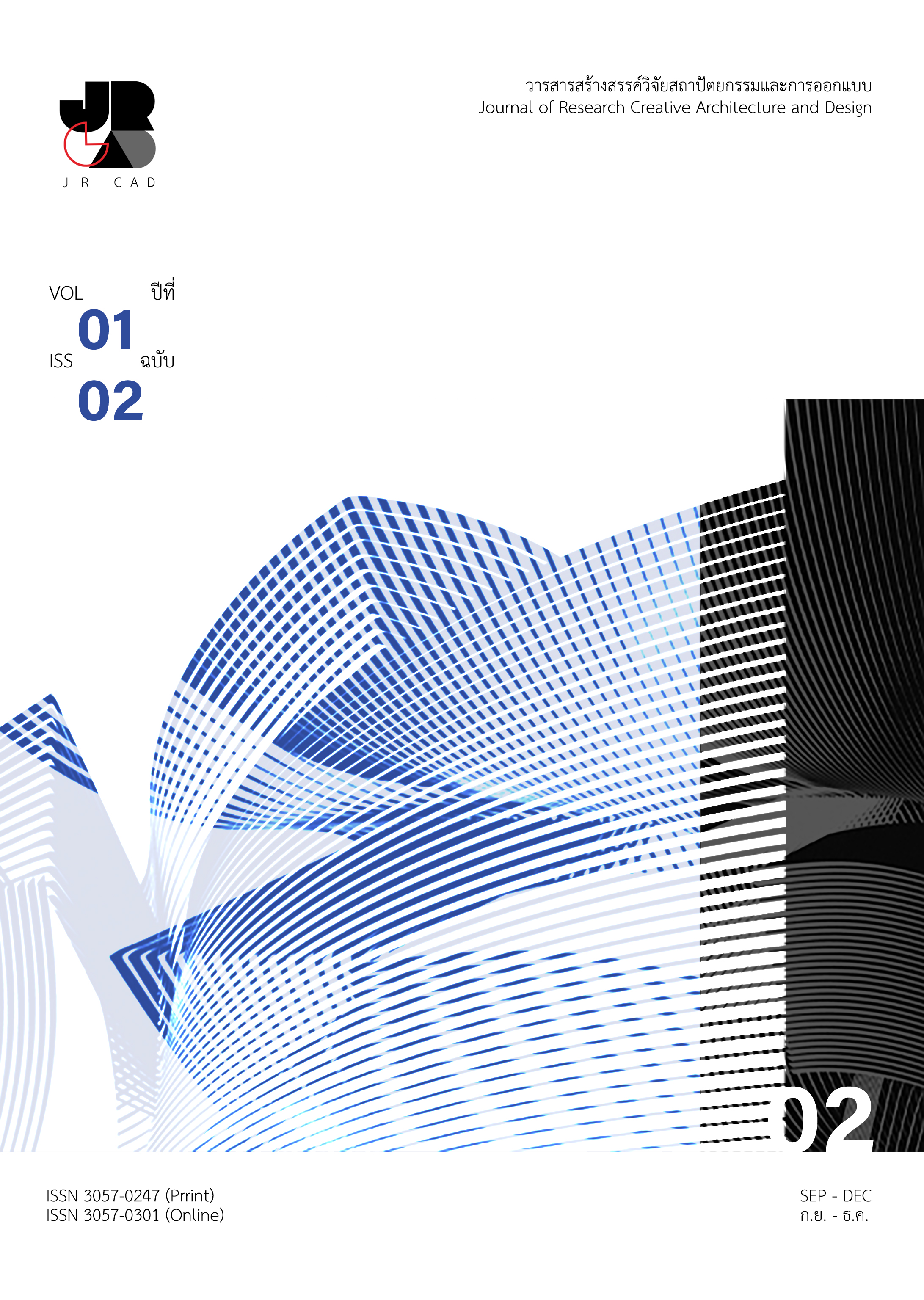Experimental with Concrete Walls Combined with Rice Husks and Bamboo to Reduce Heat Gain before Entering the Building การทดลองใช้ผนังคอนกรีตร่วมกับแกลบและไม้ไผ่เพื่อลดความร้อนรับก่อนเข้าสู่อาคาร
Main Article Content
Abstract
Abstract
Currently, Thailand is experiencing continuous economic growth, leading to numerous construction projects for buildings and residences. Construction technology has thus become a significant factor in accommodating this rapid development. One of the most popular technologies for building walls today is the use of prefabricated walls. However, these walls are relatively expensive and not environmentally friendly or suitable for residents' health. Most of the materials used, such as cement powder and EPS foam, negatively impact both the inhabitants and the ecosystem. Additionally, the agricultural industry generates a significant amount of organic waste, which is often discarded or burned, causing environmental pollution. This research aims to study the thermal performance of concrete walls combined with rice husks and bamboo. The study evaluates the thermal efficiency of three test houses, each with walls made from different materials but of the same dimensions: 1.20 x 1.20 x 1.20 m³. The test walls, 10 cm thick, face south and consist of the following configurations: House 1 uses standard Smart Board walls, House 2 uses concrete mixed with coconut fibers, and House 3 uses concrete mixed with rice husks and bamboo. The test results revealed that the average inner wall surface temperatures in each room differed by 1–5 degrees Celsius.
Article Details

This work is licensed under a Creative Commons Attribution-NonCommercial-NoDerivatives 4.0 International License.
บทความที่ได้รับการตีพิมพ์เป็นลิขสิทธิ์ของคณะสถาปัตยกรรมและการออกแบบ มหาวิทยาลัยเทคโนโลยีพระจอมเกล้าพระนครเหนือ


